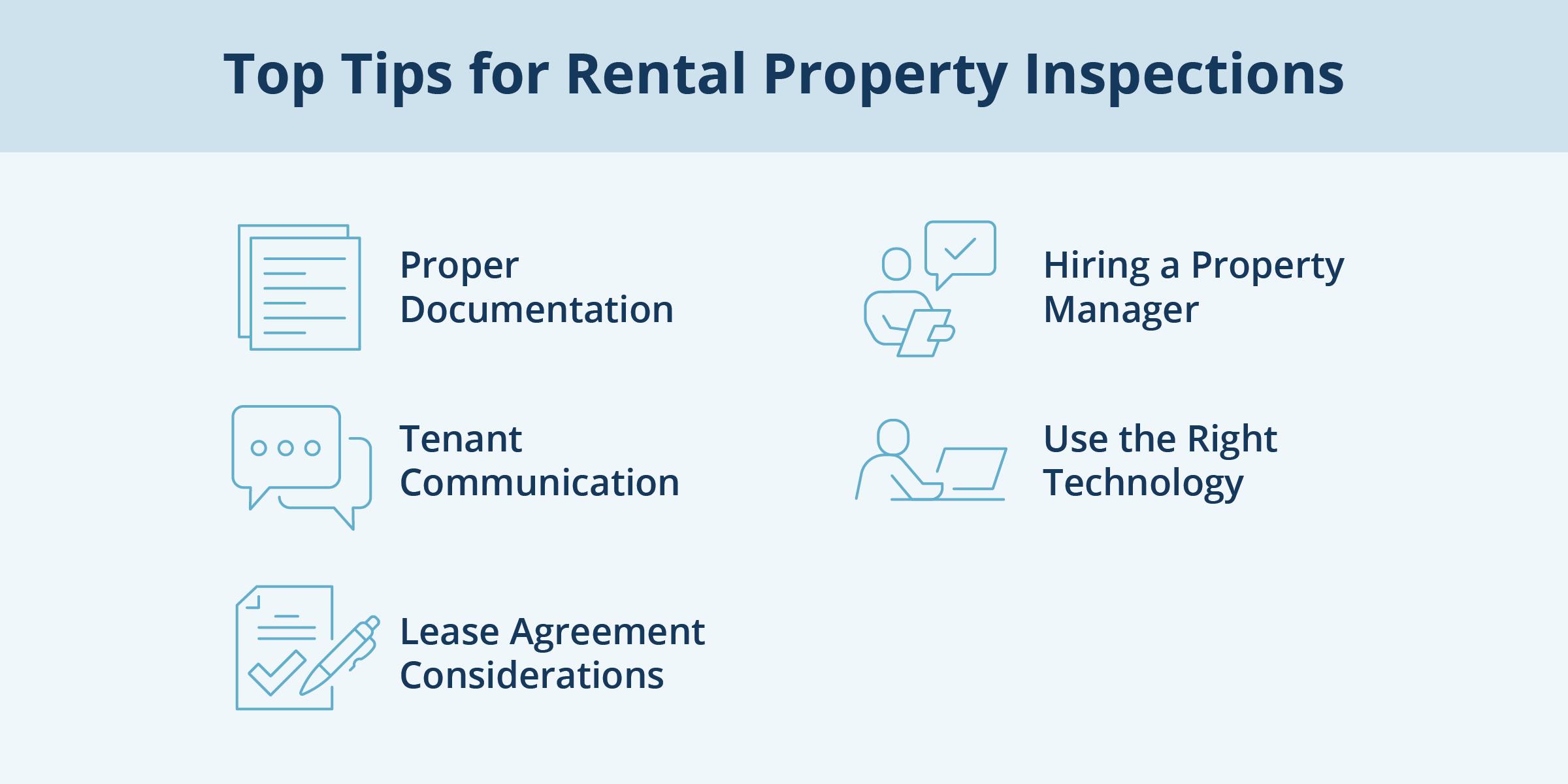
As a landlord, conducting regular inspections of your rental property is crucial to monitoring its condition, addressing maintenance issues, and protecting your investment. This article will provide a comprehensive rental property inspection checklist covering move-in, move-out, and lease renewal inspections. To make it easier, we've also created a downloadable checklist you can reference.
Understanding the Importance of Rental Property Inspections
Regular inspections are a fundamental aspect of managing rental properties. They help you identify damage or maintenance needs, ensure the property meets safety standards, and maintain a positive landlord-tenant relationship.
Additionally, by having a thorough landlord inspection checklist ready to go, you can address issues promptly, mitigate potential risks, and protect the value of your property.
The 4 Essential Types of Rental Property Inspections
There are four typical inspections you'll want to conduct regularly. These inspections help ensure damages and other issues are identified and addressed promptly, reducing the risk of costly repairs and legal disputes.
Move-in Inspections
Before a tenant moves into your rental property, perform a thorough move-in inspection. This inspection involves documenting the property's condition and any existing damages or issues. By completing a move-in inspection, you establish a baseline and protect yourself from potential disputes regarding damages when the tenant moves out.
Seasonal Maintenance Inspections
Regular seasonal maintenance inspections allow you to identify and address maintenance needs, such as HVAC system servicing, gutter cleaning, and exterior repairs. Depending on your location, these inspections are your chance to “expect the unexpected” by considering the risk of severe weather—including storms, wildfires, or other natural disasters—that could cause damage. Staying on top of seasonal maintenance can prevent significant issues from having as much impact as minor issues from escalating into costly repairs.
For a more detailed explanation of what to check for and when, check out this guide from Buildium.
Pre-Lease Renewal Inspections
Before renewing a lease, assess the property's condition and ensure it meets your standards. Conducting a pre-lease renewal inspection helps you identify any damages, gauge the level of care a tenant has treated your property with, and determine whether the lease should be renewed. In addition, this inspection gives you a set time to address any issues before discussing lease renewal terms with the tenant.
Move-out Inspections
A comprehensive inspection is necessary whenever a tenant moves out. This inspection helps determine if the tenant is responsible for any damages beyond normal wear and tear. In addition, by comparing the move-in inspection report to the property's current condition, you can accurately assess any necessary deductions from the security deposit—so long as you’ve also been conducting seasonal and lease renewal inspections as well.
Debunking the Landlord Annual Inspection Checklist
Contrary to popular belief, an annual inspection checklist isn't necessary if you're proactive with seasonal maintenance. By consistently conducting seasonal maintenance inspections, you can stay on top of any issues and maintain the property's condition throughout the year. In addition, you can refer to reputable sources like Buildium's property maintenance services checklist guide for detailed seasonal maintenance checklists.
5 Top Tips for Rental Property Inspections
To ensure adequate and professional rental property inspections, here are some best practices to follow:

- Proper Documentation: Document your inspection findings thoroughly, including written notes, photographs, and videos. This documentation serves as evidence in disputes and helps you track the property's condition over time.
- Tenant Communication: Communicate clearly with your tenants about inspection schedules and expectations. Provide advance notice and be respectful of their privacy. Clear communication fosters a positive landlord-tenant relationship and ensures smooth inspections.
- Lease Agreement Considerations: Include clauses in your lease agreement that address inspections, access to the property, and tenant responsibilities regarding maintenance and reporting damages. Having these provisions in writing sets clear expectations for both parties.
- Hiring a Property Manager: You won’t always know what to look for in an inspection or have the time to conduct them. A property manager can handle inspections and other property management tasks you’d like to delegate regularly and reliably. A professional property manager has the expertise and resources to conduct thorough inspections, ensuring your property is well-maintained and compliant with applicable regulations. A property manager can also handle tenant communication, document inspections, and provide peace of mind knowing that your property is in capable hands.
- Use the Right Technology: Many digital tools are at your disposal to help you conduct inspections quickly while still checking all the boxes. Software like HappyCo’s inspection app lets you use your phone to create templates and complete detailed inspections from your phone on the fly. These types of tools can also let you share documentation, schedule inspections with tenants, and even manage work orders. A property management company is likely already familiar with this technology and can use it when inspecting your property.
Rental Property Inspection Templates
Each type of inspection requires something slightly different. So to help landlords conduct thorough inspections, no matter the season, we've created quick-reference checklists for each scenario:
Move-In Rental Property Inspection Checklist:
- Exterior: Check the condition of the exterior walls, roof, windows, doors, and landscaping. Responsibility for damages to these areas may fall on either you or the tenant, depending on the lease agreement and property type.
- Interior: Inspect each room, including walls, ceilings, floors, appliances, plumbing fixtures, electrical outlets, and HVAC systems.
- Document any existing damages or issues and ensure they are acknowledged and signed by the tenant.
Seasonal Rental Property Inspection Checklist:
- Weatherproof and clean outdoor areas, preparing them for the risk of damages caused by seasonal weather and natural disasters
- Test all alarms, sprinklers, backup generators, and other safety features and ensure HVAC and other systems are running efficiently
- Replace and touch up appliances, amenities, exterior paint, weather stripping, caulking and other features as needed
- Clear debris and continuously landscape as needed
- Remind tenants of any emergency guidelines and safety precautions
Lease Renewal Rental Property Inspection Checklist:
- Assess the property's overall condition, focusing on areas requiring repairs or updates.
- Check for any damages caused by the tenant and discuss necessary maintenance or repairs.
- Discuss lease renewal terms, rental adjustments, and any changes to the lease agreement.
Move-Out Rental Property Inspection Checklist:
- Compare the property's current condition with the move-in inspection report.
- Document any damages beyond normal wear and tear and discuss potential deductions from the security deposit.
- Provide the tenant with a detailed move-out inspection report to maintain transparency.
Regular inspections are vital for maintaining the condition of your rental property and protecting your investment. Following the provided rental property inspection checklist and best practices, you can identify issues early, promptly address maintenance needs, and foster positive landlord-tenant relationships.
Consider leveraging property inspection technology and, if needed, seek the assistance of a professional property manager to ensure thorough and professional inspections.
Download our rental property inspection checklist to start maintaining the quality and value of your rental property.
